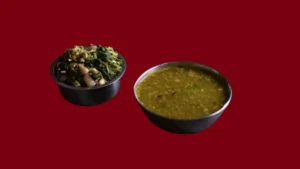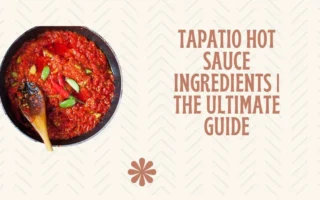Bassaru is a traditional Karnataka dish that combines the rich flavors of dill and coconut with the health benefits of vegetable stock. Known for its unique taste and nutritional value, this dish is a staple in many South Indian households. This article provides a detailed guide on preparing Karnataka-style Bassaru, including both the Dill-Flavored Coconut Rasam (Bassaru) and a complementary Cabbage Palya (vegetable stir-fry).
What is Bassaru?

Bassaru Recipe is a type of rasam—a South Indian soup—made from the drained water of dal (lentils) combined with spices and coconut. The term “Bassaru” refers to the dish made using this nutrient-rich water. The addition of dill leaves imparts a distinct, aromatic flavor, while the coconut masala adds a creamy texture.
Key Features:
- Base Ingredient: Drained water from cooked dal.
- Flavor Profile: Dill leaves, coconut, and spices.
- Accompaniments: Typically served with steamed rice or ragi mudde (finger millet balls).
Ingredients for Karnataka-Style Bassaru Recipe
Bassaru (Dill-Flavored Coconut Rasam)
Core Ingredients:
- Toor Dal: 1 cup (split pigeon peas)
- Dill Leaves: 1/2 cup
- Fresh Coconut: 4 tbsp (grated)
- Onion: 1 (chopped)
- Dry Red Chillies: 4
- Black Peppercorns: 1 tbsp
- Poppy Seeds: 2 tbsp
- Garlic: 4 cloves
- Mustard Seeds: 1 tsp
- Curry Leaves: 2 sprigs
- Salt: To taste
- Oil: For tempering
For Masala Paste:
- Fresh Shredded Coconut: 1/3 cup
- Cooked Toor Dal: 2 tbsp (from the dal cooked above)
- Onion: 1/2 (chopped)
- Garlic: 4 cloves
- Coriander Leaves: 3 sprigs
- Cumin Seeds: 1/4 tsp
- Tamarind Paste: 2 tsp (or soaked tamarind)
- Black Peppercorns: 8–10
- Dried Red Chilli: 1
Cabbage Palya (Vegetable Stir-Fry)
Core Ingredients:
- Cabbage: 2 cups (chopped)
- Toor Dal: 1/4 cup (cooked)
- Mustard Seeds: 1/4 tsp
- Curry Leaves: 1 sprig
- Dried Red Chilies: 2
- Garlic: 5 cloves (chopped)
- Onion: 1/2 cup (chopped)
- Fresh Shredded Coconut: 1/4 cup
- Salt: To taste
- Oil: For cooking
- Coriander Leaves: 2 sprigs (chopped)
Preparation Steps
How to Make Karnataka-Style Bassaru Recipe
- Cook the Dal and Vegetables:
- In a pressure cooker, add 1 cup toor dal and 2 cups water. Place chopped dill leaves in a separate bowl inside the cooker, adding 1/2 cup water to the bowl.
- Pressure cook for 2 whistles. Allow the pressure to release naturally.
- Once done, strain the water from both the dal and dill leaves. This will be used for making the rasam.
- Prepare the Masala Paste:
- In a mixer jar, combine fresh shredded coconut, 2 tbsp cooked toor dal, onion, garlic, coriander leaves, cumin seeds, tamarind paste, dried red chili, and black peppercorns.
- Grind to a smooth paste, adding 1/2 cup water.
- Cook the Rasam:
- Heat oil in a pan, add mustard seeds, chopped garlic, and curry leaves. Let them splutter.
- Add turmeric, the reserved veggie stock, and the ground masala paste to the pan.
- Add salt and an additional cup of water. Let it simmer for 10 minutes.
- “Add chopped coriander leaves as a garnish and then remove from heat.”
How to Make Cabbage Palya
- Prepare the Base:
- Heat oil in a pan. “Cook for a few minutes until everything is well combined and heated through.”Let the mustard seeds splutter.
- Add chopped garlic and onions, and sauté until the onions are soft.
- Combine Ingredients:
- Add the cooked cabbage and toor dal to the pan. Mix well.
- Stir in salt, fresh shredded coconut, and coriander leaves.
- Cook for a few minutes until everything is well combined and heated through. Remove from heat.
Nutritional Benefits
Bassaru
- “Rich in Protein: Toor dal is an excellent source of protein.”
- Flavorful and Aromatic: Dill leaves add a unique flavor and aroma.
- Low in Calories: It is light yet filling, making it ideal for a healthy diet.
Cabbage Palya
- High in Fiber: Cabbage is rich in dietary fiber.
- Nutrient-Rich: Contains vitamins C and K, along with antioxidants.
- Supports Digestion: The combination of cabbage and dal aids in digestion.
Comparison of Bassaru and Cabbage Palya
| Aspect | Bassaru | Cabbage Palya |
| Main Ingredients | Toor dal, dill leaves, coconut | Cabbage, toor dal, coconut |
| Preparation Method | Simmering with masala paste | Stir-frying with spices |
| Flavor Profile | Dill and coconut with a spicy kick | Savory with a hint of sweetness from coconut |
| Nutritional Value | High in protein and low in calories | Rich in fiber and vitamins |
FAQs
What is the best way to serve Bassaru?
Bassaru is best served hot with steamed rice or ragi mudde. It pairs well with a variety of side dishes like palya or sambar.
Can I make Bassaru ahead of time?
Yes, you can prepare Bassaru in advance. Store it in an airtight container in the refrigerator for up to 3 days. Reheat before serving.
What can I use if I don’t have dill leaves?
If dill leaves are unavailable, you can use fenugreek leaves or spinach as substitutes. While the flavor will differ slightly, these greens can still provide a pleasant taste.
Can I freeze Bassaru?
Yes, Bassaru can be frozen. Store it in a freezer-safe container for up to 3 months. Thaw and reheat before serving.
How do I make the masala paste more spicy?
To increase the spiciness of the masala paste, add more dried red chilies or black peppercorns according to your taste.
Conclusion
The Karnataka Style Bassaru is a delightful and nutritious addition to any meal. Its unique combination of dill, coconut, and spices makes it a flavorful rasam that pairs beautifully with rice or ragi mudde. Alongside, the Cabbage Palya provides a hearty and tasty vegetable stir-fry that complements the rasam perfectly. Whether you’re new to South Indian cuisine or a seasoned cook, this recipe is sure to become a favorite in your kitchen.




